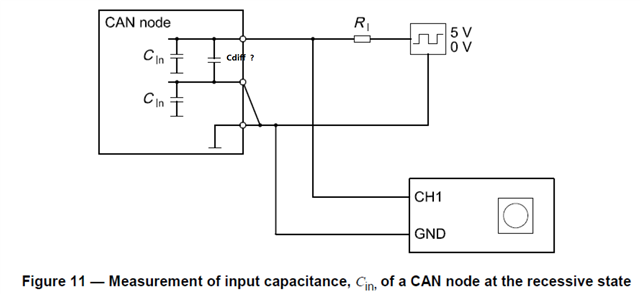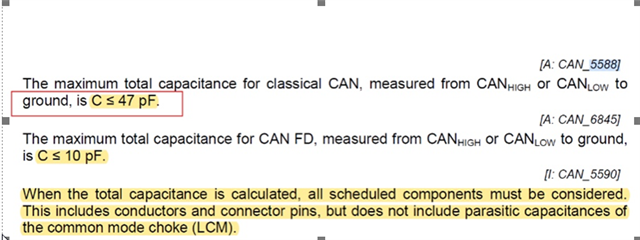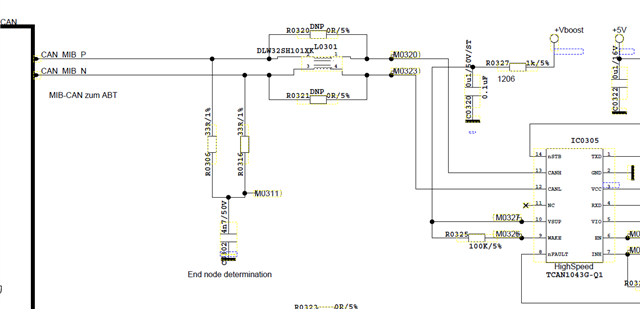hi team,
i have serval following-up question regarding previous post.
1. Is there any typo in ISO11898-2 as well as last post's description, connect CANL to gnd will take the cdiff into consideration? I think the right Cin measure should connect CANL to CANH, then ![]() . May you double confirm?
. May you double confirm?

2. For Cin test, as OEM requires ECU level test, do we need to remove the termination network--33ohm*2+4.7nF (CMC exclude already)? I am afraid we might not pass the test with termination, pls help confirm?


Regards,
Dongbao


